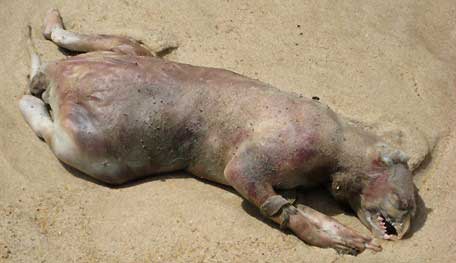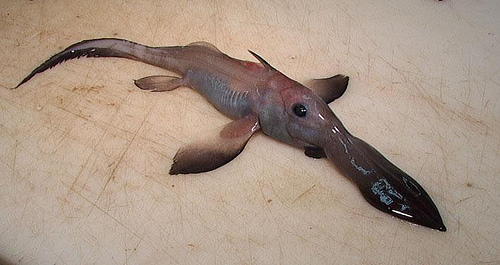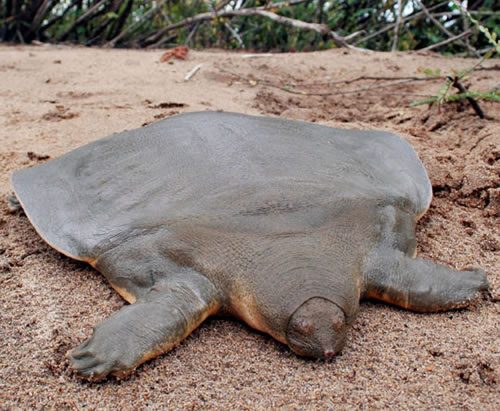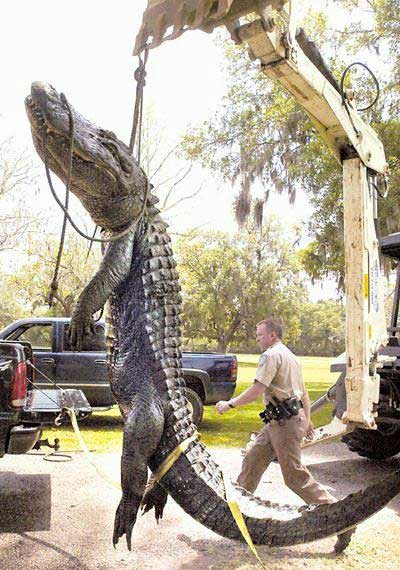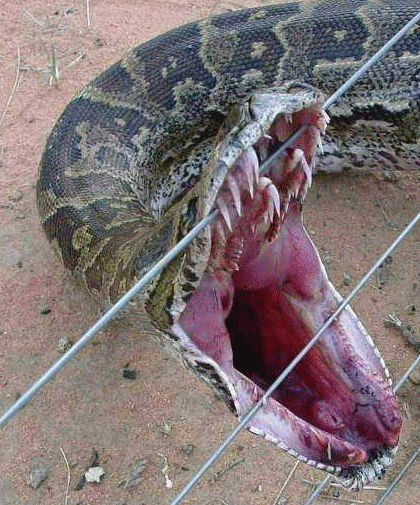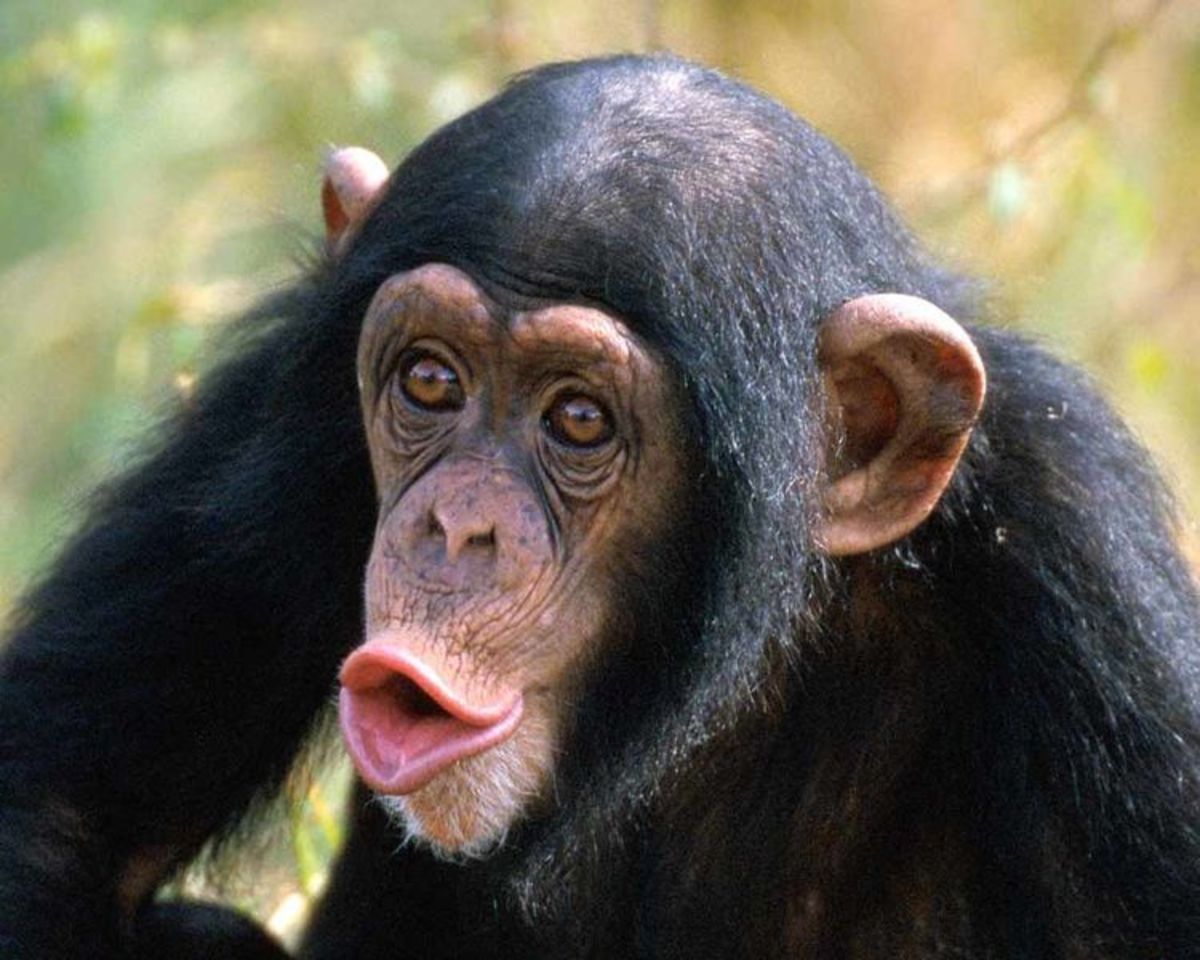Monsters And Strange Creatures of The Earth
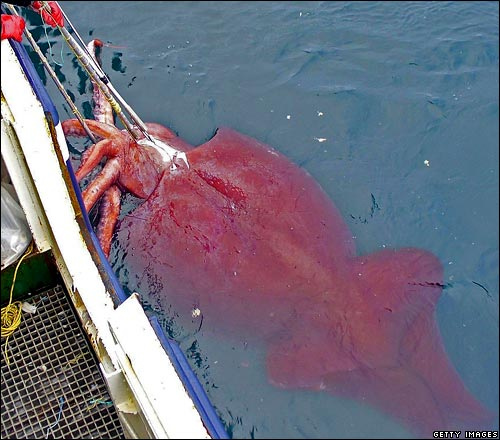
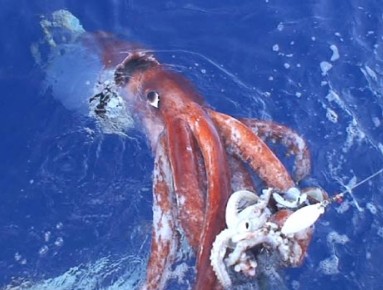
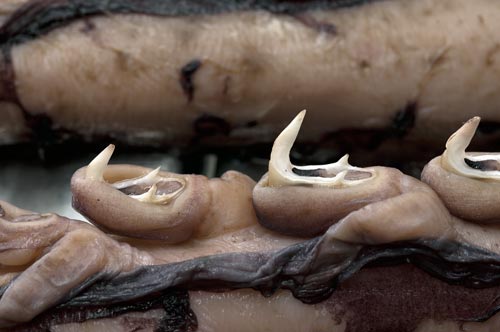
The Colossal Squid
This is the largest known invertebrate. Its maximum size is estimated to be at about 50 feet long, and is also believed to be the largest species of squid. Some call it the Antarctic, or Giant Cranch Squid, but more often referred to as the Colossal Squid.
The arms and tentacles of the Colossal contain sharp hooks, which either swivel or point, unlike the giant squid. The Colossal has the largest eyes ever documented within the animal kingdom. It is said that the entire circumantarctic southern ocean is where the Colossal makes its home.
Not too much is known about the Colossal, but it is believed that it hunts large fish and other squid in the deep ocean, diving to depths of up to 2200 meters. It is also believed that the sperm whales, and Pacific sleeper sharks hunt the Colossal, as beaks from Colossal squids have been found within their stomachs. However, apparently they don't go down without a fight, as many sperm whales carry scars on their backs, which may have come from the hooks on a Colossal.
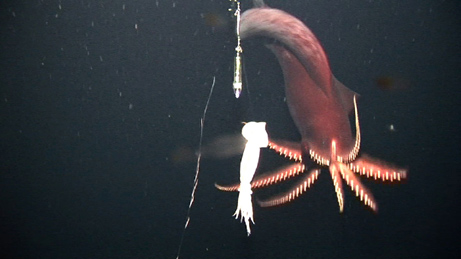
The Octopus Squid
This is another large species of squid, which emits blinding flashes of light before attacking its prey. This squid may also use the light to scare off predators, and mark its territory. Remains and tentacles of this squid have often been found in Bermuda's Grape Bay.
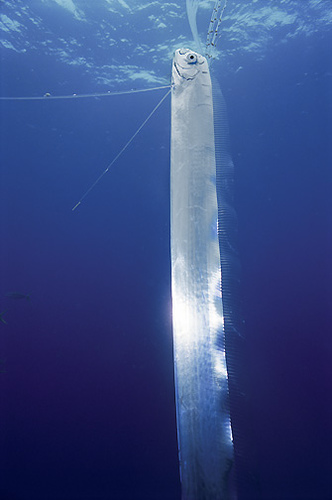
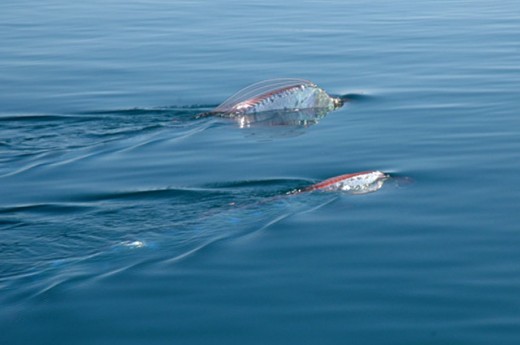
The Oarfish
Rarely seen, but suspected to be found in all temperate to tropical oceans, this fish has a very long body, and was once thought to propel itself using its pelvic fins. At 36 feet in length, one of the species known as the king of herrings, is the longest bony fish alive. There are four species all together that make up the Oarfish.
The dorsal fin runs the entire length of the Oarfish, with approximately 400 dorsal fin rays. The fins lack true spines, and according to researchers who encountered an Oarfish in New Zealand, it may also give off electric shocks when touched.
In 1860, when an Oarfish washed ashore Bermuda beach, it was originally thought to be some kind of sea serpent. Actual encounters with the Oarfish are rare, but they have been seen around Bermuda and the Bahamas, and may be worldwide. Any large carnivor out in the oceans is a likely predator of the Oarfish, while it may feed on small fish, squid, and zooplankton itself.
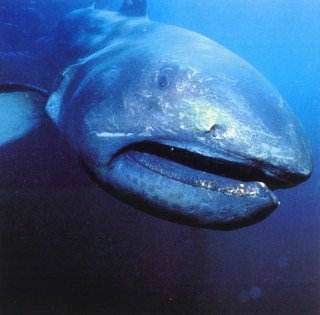
The Megamouth Shark
First discovered in 1976, this is a very rare species of deepwater shark. It is unlike any other kind of shark, and classified in its own family. It has big rubbery lips and a huge head, and swims with its mouth open to collect things like plankton and jellyfish. Inside of its gill, there are finger like gill which capture its food.
The shark may reach up to 18 feet long, but is a poor swimmer. Not many Megamouth sharks have been seen, but there was one that was caught and tagged near Dana Point in California. This megamouth moved very slow, and only dived down to about 160 meters. The first of its kind was caught in 1976, off the coast of Hawaii.
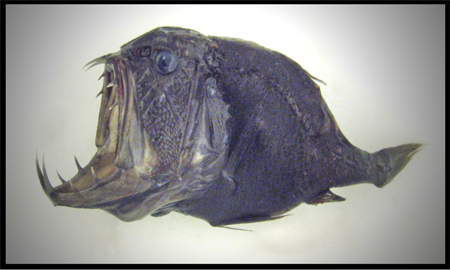
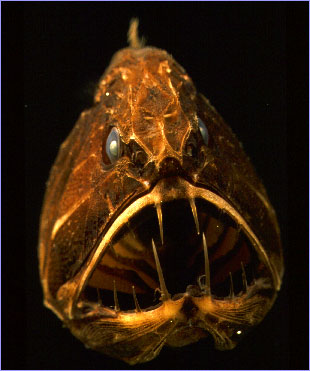
The Ogrefish
It looks as good as the name makes it sound. It has large teeth, the largest of any fish in proportion to the rest of its body. The Ogrefish, also known as the Fangtooth, may look ferocious, but it actually only reaches 6 inches in size. Its eyesight is poor, but it does have the ability to sense movement and vibration in the surrounding water.
The Ogrefish hunts other small fish and squid, and it is believed that it must actually bump into other things in the water because of its poor eyesight. It is also believed that the Ogrefish, although approaching the surface at night to feed, may actually reach depths of up to 5,000 meters deep. It has been seen throughout the world in temperate to tropical areas, especially around Australia.
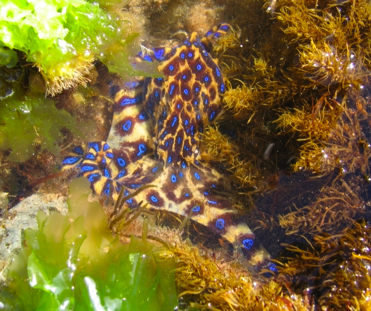
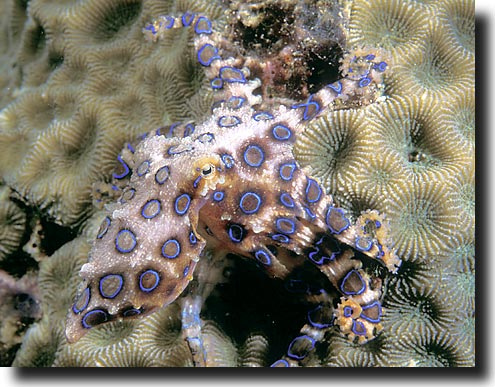
The Blue-Ringed Octopus
From Japan to Australia, these species of octopus live in the Pacific Ocean, and are recognized as one of the most venomous animals in the world. They are attractive looking with their yellow skin, and blue and black spots, however, their venom has the potential to kill humans, and there is no antidote.
Victims of the Blue-Ringed Octopus may be completely aware of their surroundings, yet unable to breathe or move. They will need to go on respiratory support and have the toxin washed out of the body. Victims who make it through the first 24 hours, generally recover.
The octopus generally feeds on shrimp and crab, as well as any fish they are able to catch. They paralyze their prey with their venom, and tear the flesh with their beaks.
The Beast of Bodmin Moor
Phantom like cats were supposedly witnessed in the U.K., where livestock mutilations began to take place, which began to be known as the Beast of Bodmin Moor. The cat(s) is said to be similar to a large panther. An investigation was done in 1996, where no exotic animals were found in the area, but whether or not there was a large panther like cat roaming the area, could not be confirmed or disputed. The police later revealed classified pictures of large cats which had been shot by farmers.
Since 1983, there have been 60 sightings of large black cats in Cornwall, and as far as Kent and Scotland.
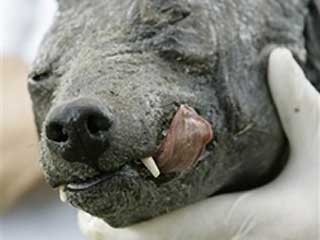
The Chupacabra
Roaming various parts of the U.S. and Puerto Rico, the Goat Sucker is said to suck the blood out of its prey, which tend to be goats and livestock. Since 1990, reports of the Chupacabra have been taking place from Maine, all the way down to Chile.
In 1995, the first reported attack took place in Puerto Rico, where 8 sheep were found bloodless with 3 puncture wounds arond the chest. In Texas, coyote carcasses have been found, but were said to have a severe case of mange, as they were without any hair.
In 2005, reports came from Russia describing the same situation where animals were drained of their blood by some unknown beast.
In 2007, a hairless creature that looked unlike any other dog or animal was found dead along the roadside in Maine, where a number of dog maulings were taking place. That same year, 300 sheep were killed in the region of Boyaca.
In 2007, 3 carcasses were found in Texas, where chickens had been being drained of their blood. One head was frozen, and tests were done which determined the carcass to be that of a coyote. The very next year, a dog like creature was seen attacking chickens in the Philippines, which was believed to be a Chupacabra. A DeWitt County deputy also caught a dog like creature from the camera on his dashboard in Cuero, Texas, the same area where the three carcasses were found the previous year. The hairless animal had a long snout, short front legs, and long back legs.
Overall, the Chupacabra is said to be a hairless creature with a visible spine. It appears to be 3 or 4 feet tall, and has the head of a dog or panther, with large fangs. They eyes may glow in a redish color, and it may leave behind a foul stench. The animal is said to drain the blood of its prey with 1 or 2 puncture holes.
